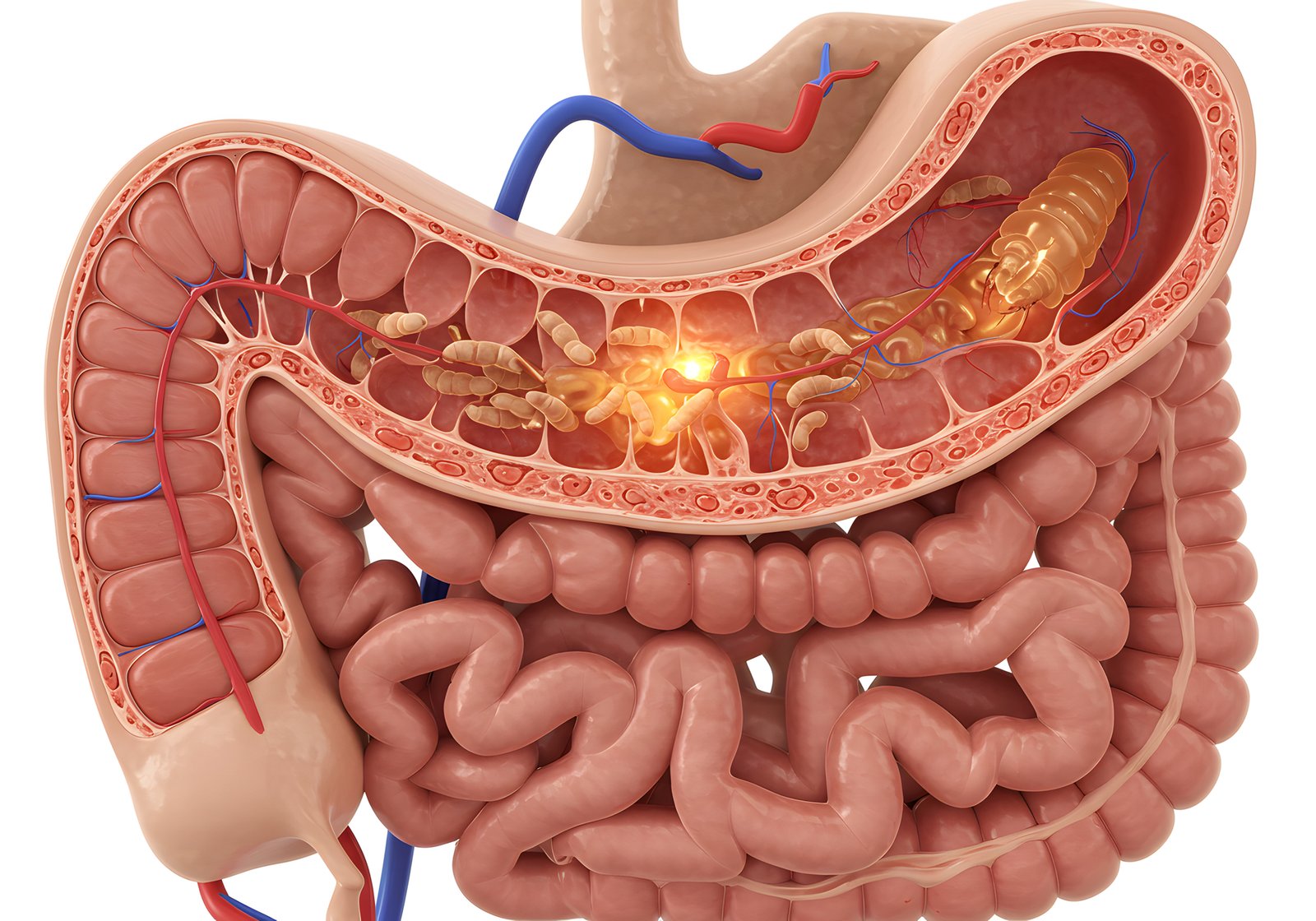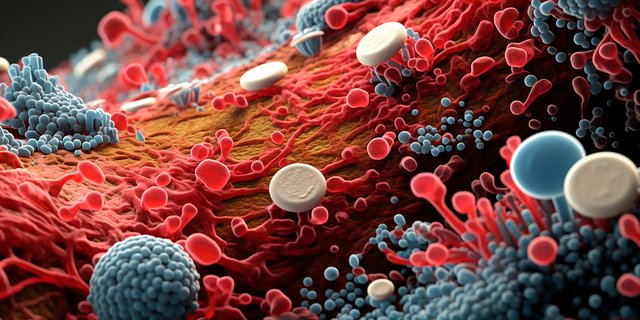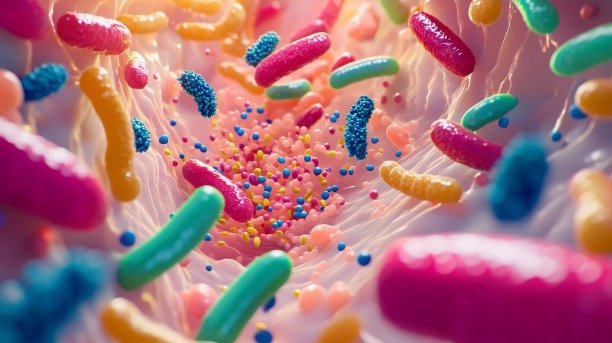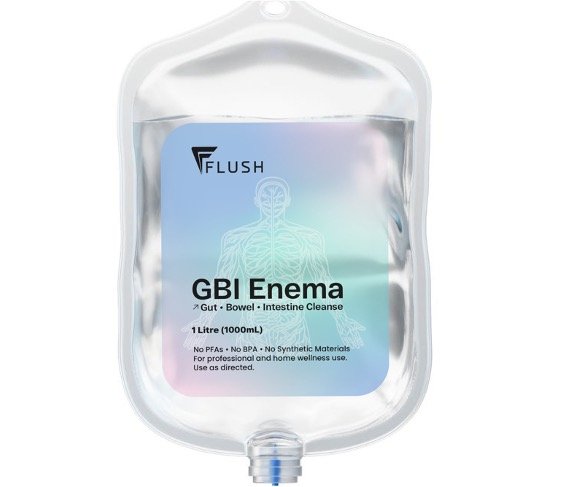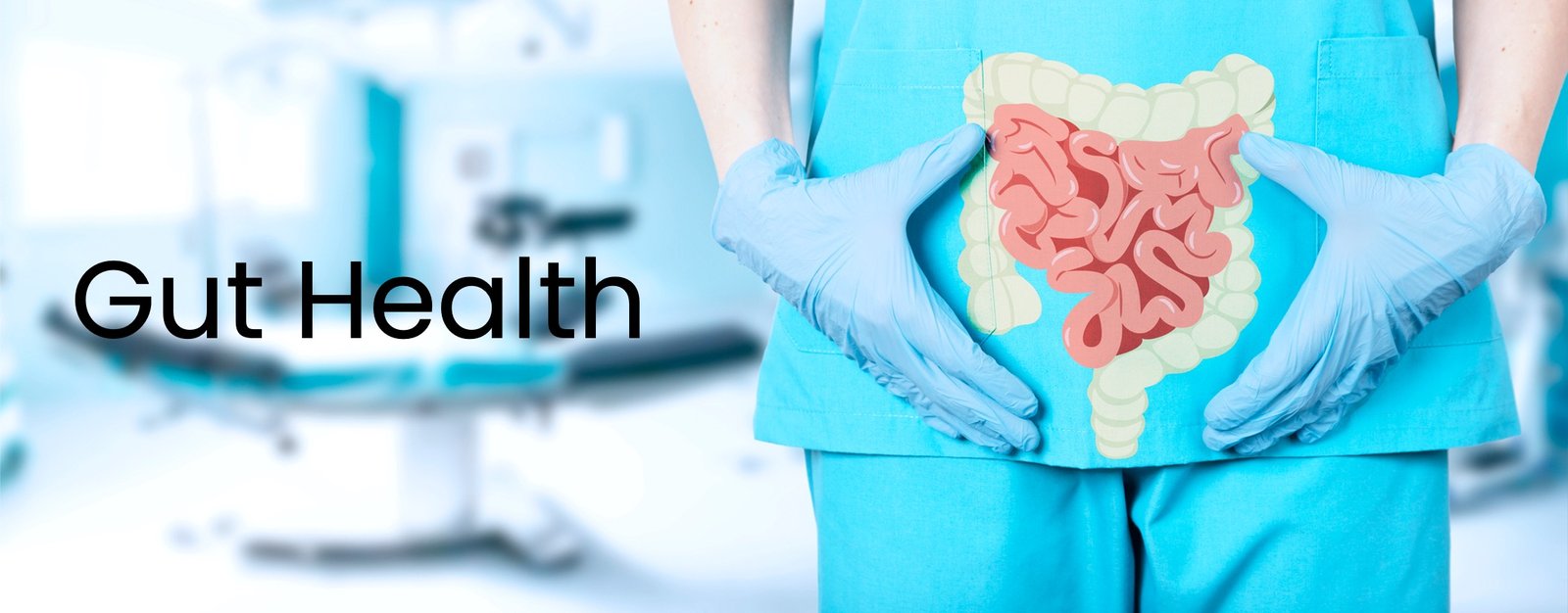
Toxins: A Fast Reset
 Your gut is far more that a digestive orgran – it is the body’s hidden command centre. Often referred to as the second brain, it contains over 500 million neurons and produces key neurotransmitters that affect mood, memory and immune strength. Modern science has shown that gut health influences everything from mental calrity to chronic disease resistance.
Your gut is far more that a digestive orgran – it is the body’s hidden command centre. Often referred to as the second brain, it contains over 500 million neurons and produces key neurotransmitters that affect mood, memory and immune strength. Modern science has shown that gut health influences everything from mental calrity to chronic disease resistance.
Yet, in today’s toxic world, this delicate system is under attack. PFAS (forever chemicals), microplastics, heavy metals, glyphosate, and pathogens silently build up in our bodies, damaging the gut lining and overwhelming the microbiome. Left unchecked, these invaders can trigger inflammation, autoimmune conditions, and long-term health decline.
This is where Flush GBI comes in. Our unique formulated ingredients work fast to coat, neutralise, and flush out toxins. What cannot be fully removed is rendered harmless, allowing the body to recognise and adapt. In as little as 24–48 hours, users report lighter digestion, sharper clarity, and renewed energy. Over time, the Flush program forms a protective foundation that, when combined with small lifestyle changes, restores balance and resilience.
Flush isn’t just another detox. It’s the first line of true health insurance for your gut — and by extension, your entire body.
The Body’s Forgotten Brain
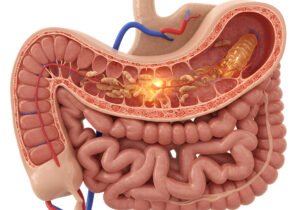 Most people think of the gut simply as the place where food is digested. In reality, it is far more sophisticated — a complex information hub with direct links to nearly every major system of the body.
Most people think of the gut simply as the place where food is digested. In reality, it is far more sophisticated — a complex information hub with direct links to nearly every major system of the body.
The Enteric Nervous System: Your “Second Brain”
The gut is controlled by the enteric nervous system (ENS), a vast network of over 500 million neurons — more than in the spinal cord. This system communicates continuously with the brain via the gut–brain axis, using the vagus nerve and chemical messengers like serotonin, dopamine, and GABA. In fact, over 90% of the body’s serotonin — the neurotransmitter that regulates mood and sleep — is made in the gut, not the brain.
This means gut health is inseparable from mental clarity, mood balance, and even resilience against anxiety and depression (Mayer EA, Nat Rev Neurosci, 2011).
The Microbiome: A Hidden Organ
Alongside the ENS, the gut houses the microbiome — trillions of bacteria, fungi, and other microorganisms that function like a hidden organ. These microbes:
-
Break down food and produce essential vitamins (like B12 and K2).
-
Train the immune system, preventing overreaction and autoimmune disease.
-
Influence metabolism, weight regulation, and inflammation control.
-
Protect the gut lining against toxins and pathogens.
Disturbances in the microbiome (dysbiosis) have been linked to conditions ranging from obesity and diabetes to Alzheimer’s disease and Parkinson’s (Cryan & Dinan, Nat Rev Neurosci, 2012).
What Goes Wrong: Toxins and the Gut
Unfortunately, modern life is relentlessly hostile to gut health. Industrial chemicals such as PFAS, glyphosate, microplastics, and heavy metals infiltrate the gut, altering microbiome composition and damaging the intestinal wall. This leads to “leaky gut syndrome”, where toxins slip into the bloodstream, sparking chronic inflammation and systemic illness.
Pathogens from food, water, and pets further destabilise the system, compounding the burden.
Where Flush GBI Fits In
Flush GBI’s specially formulated Sachet is designed to intervene at this critical point. By:
-
Coating and neutralising toxins, allowing the immune system to recognise and adapt to them.
-
Flushing out what can be expelled, lightening the toxic load within hours.
-
Restoring balance, giving beneficial bacteria and gut lining cells space to recover.
The result is not just a temporary detox but the resetting of the gut’s communication pathways — restoring both the “second brain” and the immune system to their natural rhythm.
Microbiome: Its Role in Detox and Immunity
 The human gut is home to trillions of microorganisms — bacteria, viruses, fungi, and archaea — collectively known as the gut microbiome. In fact, the number of microbial cells in your gut rivals the number of human cells in your entire body, making this ecosystem one of the most influential forces on your health.
The human gut is home to trillions of microorganisms — bacteria, viruses, fungi, and archaea — collectively known as the gut microbiome. In fact, the number of microbial cells in your gut rivals the number of human cells in your entire body, making this ecosystem one of the most influential forces on your health.
Far from being passive residents, these microbes act as a living extension of your biology, regulating digestion, metabolism, immunity, and even mood. Scientists now refer to the gut as a “central hub of health,” where balance or imbalance (dysbiosis) can ripple through every system in the body.
1. Microbiome as the Body’s Detox Partner
Your gut microbiota play a direct role in detoxification:
-
Breaking down toxins: Certain bacteria can degrade heavy metals, pesticides, and harmful metabolites before they can be absorbed.
-
Binding and excretion: Microbes bind to toxins and package them for elimination through stool — your body’s most natural flush mechanism.
-
Protecting the barrier: A healthy microbiome strengthens the gut lining, preventing “leaky gut,” where toxins escape into the bloodstream and overwhelm the immune system.
When this microbial army is disrupted by poor diet, antibiotics, chemicals (like PFAS or glyphosate), or stress, the detox machinery falters — and toxins accumulate.
2. Microbiome and Immunity
Around 70% of your immune system resides in the gut, in structures known as gut-associated lymphoid tissue (GALT). Here, immune cells constantly interact with microbial signals, training themselves to distinguish between friend and foe.
-
Balanced microbiome = balanced immunity: Good bacteria stimulate regulatory T-cells, calming inflammation.
-
Dysbiosis = immune confusion: When harmful microbes dominate, the immune system is pushed into overdrive, causing allergies, autoimmunity, or chronic low-grade inflammation.
Recent research (Belkaid & Hand, Science, 2014) shows that gut bacteria don’t just “support” the immune system — they educate and regulate it. Without them, immunity collapses.
3. Microbiome and the Nervous System
The gut microbiome produces neurotransmitters and metabolites like serotonin, dopamine, and GABA. In fact, up to 90% of serotonin is produced in the gut, not the brain. These chemical messengers link the gut to the brain through the vagus nerve, explaining why gut imbalances often manifest as anxiety, depression, or brain fog.
This is why the gut is often called the “second brain.” It doesn’t just digest food — it communicates with and shapes your mental state, immune defense, and detox capacity.
4. Where Flush GBI Fits In
Flush GBI works with the microbiome by:
-
Clearing out harmful disruptors (PFAS, microplastics, heavy metals, pathogens) that derail gut microbial balance.
-
Supporting beneficial bacteria by restoring a cleaner gut environment in which they can thrive.
-
Using our specially formulated ingredients to coat and neutralize toxins, so they don’t continue disrupting microbial or immune functions.
The result is not just a cleaner gut, but a stronger, more intelligent microbiome capable of defending you naturally — the way it was designed to.
5. Why Lifestyle Still Matters
Flush GBI provides the reset and relief your body needs, but for long-term gut and microbiome health you must also:
-
Choose clean foods free from pesticides and ultra-processed additives.
-
Drink pure water — avoid tap water with chlorine, fluoride, and microplastics.
-
Use toxin-free cookware — skip non-stick pans containing PFAS.
-
Spend time in nature — exposure to natural microbes supports gut diversity.
-
Manage stress — chronic stress alters the microbiome and weakens gut immunity.
Hydration and Digestion
Water is essential for digestion, but how and when you drink it matters for gut health.
NEVER USE TAP WATER: Water quality matters.
Tap water can contain anywhere from 10 to 100 different chemicals — chlorine, fluoride, heavy metals, pesticide residues, and more. Introducing these through an enema means they bypass the body’s natural filtration system (the liver, kidneys, and detox pathways) and are delivered directly into the gut, where they compromise the very health you are trying to restore.
For true efficacy, distilled water is best, as it removes all contaminants. Alternatively, use natural mineral water, sourced from underground and naturally filtered by rock and earth. These options ensure the GBI Enema works at its full potential, without introducing toxins.
Equally important is the vessel you use to drink and store water. Always choose glass or ceramic containers — plastic and metal can leach harmful chemicals, microplastics, or heavy metals into your water. What seems like a small detail can, over time, undermine gut health and detoxification.
-
Avoid cold water: Drinking cold water can constrict blood vessels in the stomach, interfere with digestive enzymes, and shock the natural acidic balance needed to break down food. The body also has to work harder to regulate core temperature, which can slow the digestive process.
-
Sip, don’t gulp: Sipping water allows the saliva and digestive enzymes in the mouth to mix properly and aids smooth digestion. Gulping floods the stomach, dilutes stomach acids, and can create bloating or indigestion.
- Timing matters: Water and food are processed differently in the body. Drinking large amounts of water during meals can dilute stomach acid, disrupt the breakdown of proteins, and confuse the natural digestive mechanism. For optimal gut health, hydrate 20 minutes before meals and at least 1 hour after. If water is needed with food, only take small sips to aid swallowing.
What Happens When The Gut Fails
 A healthy gut is your body’s frontline of defense, but when it falters the consequences are far-reaching. Gut dysfunction is not just about indigestion or bloating — it can create a cascade of imbalances that touch every system in the body.
A healthy gut is your body’s frontline of defense, but when it falters the consequences are far-reaching. Gut dysfunction is not just about indigestion or bloating — it can create a cascade of imbalances that touch every system in the body.
1. Leaky Gut and Toxin Overload
When the gut lining is compromised — often through toxins, processed foods, stress, or antibiotics — it becomes “leaky”. Instead of acting as a protective filter, the gut wall allows undigested food particles, harmful bacteria, and environmental toxins to pass into the bloodstream.
-
Immune chaos: The immune system perceives these molecules as invaders, triggering chronic inflammation.
-
Toxin circulation: Instead of being excreted, toxins recirculate, burdening the liver, kidneys, and lymphatic system.
-
Systemic disruption: This has been linked to autoimmune diseases, allergies, chronic fatigue, and neurological decline.
2. Microbiome Imbalance (Dysbiosis)
When beneficial bacteria are outnumbered by harmful species, digestion weakens, detox slows, and inflammation becomes the norm. Symptoms often include:
-
Persistent bloating, gas, or IBS.
-
Skin conditions such as eczema or acne.
-
Mood disturbances (anxiety, brain fog, depression).
-
Reduced immunity and frequent infections.
3. Nervous System and Hormonal Fallout
Because the gut communicates with the brain and endocrine system, failure here doesn’t stay local. Disrupted gut signals can:
-
Suppress serotonin and dopamine, leading to low mood and poor motivation.
-
Interfere with sleep cycles due to melatonin dysregulation.
-
Distort appetite and energy signals, leading to weight gain or fatigue.
4. Long-Term Risks
Unchecked gut failure doesn’t just make you feel unwell day-to-day — it can accelerate chronic disease. Research links poor gut health with:
-
Cardiovascular disease (via inflammatory pathways).
-
Neurodegenerative disorders like Parkinson’s and Alzheimer’s.
-
Metabolic syndrome (diabetes, obesity, insulin resistance).
-
Immune dysfunction and higher vulnerability to toxins.
5. How Flush GBI Reverses the Cycle
This is where Flush GBI provides a critical intervention:
-
Detox reset: By binding, coating, and neutralizing toxins with CCP-Chloride, the gut lining can begin to repair.
-
Microbiome support: By removing chemical disruptors like PFAS, heavy metals, and glyphosate, Flush restores balance for beneficial bacteria.
-
Systemic relief: As toxin levels reduce, inflammation drops, and immune function begins to normalize.
Flush GBI doesn’t just mask symptoms — it directly addresses the root causes of gut failure and gives the body space to heal itself.
How Flush GBI Repairs and Resets the Gut
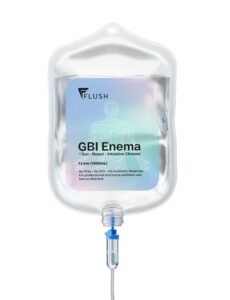
When toxins accumulate, the gut becomes inflamed, leaky, and sluggish. The key to reversing this is not just cleansing — it’s neutralising the disruptors, repairing the gut lining, and supporting the body’s natural detoxification systems. Flush GBI was designed to do exactly this.
1. The GBI Advantage
At the core of GBI are a unique set of compounds synergistically together, operating in three stages:
-
-
Coating – To binds toxic molecules such as PFAS, heavy metals, and pesticide residues, coating them so they cannot damage surrounding tissues.
-
Neutralising – Once coated, the toxins are chemically neutralised, preventing further disruption to cellular function and microbiome balance.
-
Flushing – Neutralised toxins are recognised by the body’s detox systems (lymphatic, digestive, and urinary) and naturally expelled.
-
What can’t be expelled immediately is safely stored in a neutralised state until the body is able to process it out.
2. Resetting the Gut Microbiome
By removing toxic disruptors, Flush GBI creates a clean environment where beneficial bacteria can thrive. This allows the microbiome to:
-
Restore normal digestion and nutrient absorption.
-
Re-establish the production of neurotransmitters like serotonin and dopamine.
-
Reinforce the gut wall, reducing permeability and “leaky gut” effects.
3. Reducing Inflammation and Immune Chaos
With fewer circulating toxins, inflammation drops rapidly. This not only helps the gut lining repair itself but also allows the immune system to reset, leading to fewer food sensitivities, less autoimmune flare, and improved resilience against pathogens.
4. Rapid Relief and Long-Term Repair
Many users notice a lighter, clearer feeling within days of starting Flush GBI. This is the “fast win.” But deeper repair comes with continued use:
-
Day 1–7: Initial toxin binding and relief from bloating, fatigue, and fog.
-
Day 7–14: Gut lining begins sealing, microbiome balance improves.
-
Day 14–30: Significant drop in systemic inflammation, energy and mood lift.
-
Beyond 30 Days: Sustainable detox pathways established, setting the stage for long-term wellness.
5. Why Ongoing Maintenance Is Essential
One cleanse is powerful, but toxins don’t stop coming. From drinking water contaminated with microplastics to pesticide residues on food, exposure is daily. That’s why Flush GBI is designed not just as a detox but as a program of maintenance — helping your gut continually defend against what modern life throws at it.
Lifestyle Changes That Solidify Gut Health
 Flush GBI is the catalyst — it clears the path and resets your gut. But for those changes to hold and build long-term resilience, your daily lifestyle choices are critical. The gut is remarkably adaptive; nourish it properly, and it thrives. Neglect it, and toxins, pathogens, and inflammation return.
Flush GBI is the catalyst — it clears the path and resets your gut. But for those changes to hold and build long-term resilience, your daily lifestyle choices are critical. The gut is remarkably adaptive; nourish it properly, and it thrives. Neglect it, and toxins, pathogens, and inflammation return.
1. Diet: Fuel for the Microbiome
What you eat literally feeds your second brain. A balanced gut thrives on:
-
Whole, organic foods – free from pesticides, herbicides, and residues that inflame the gut.
-
High-fibre vegetables & prebiotics – asparagus, onions, garlic, leeks, legumes. These feed bifidobacteria and lactobacilli, the “friendly” microbes that protect against disease.
-
Fermented foods – sauerkraut, kimchi, kefir, and miso naturally replenish probiotics.
-
Clean proteins – grass-fed meats, wild-caught fish, plant proteins support repair.
-
Healthy fats – omega-3s from flax, chia, and fish reduce gut inflammation.
Avoid:
-
Ultra-processed foods, artificial sweeteners, and refined sugars that starve good bacteria and feed pathogens.
-
Gluten and excessive dairy (for many, these aggravate permeability and inflammation).
-
Foods cooked in poor-quality oils or re-used frying oils.
2. Water: The Foundation of Detox
Tap water often contains chlorine, fluoride, PFAS, and microplastics — all known disruptors of gut and hormonal health. Switch to:
-
Distilled, Natural Mineral or Filtered water free from these contaminants.
-
Glass or ceramic cups or bottles (avoid BPA and PFAS leaching plastics).
Water is the medium through which toxins are carried out of the body — without enough of it, detox slows dramatically.
3. Movement: Exercise as Gut Medicine
Exercise stimulates blood flow, improves microbiome diversity, and strengthens immune resilience. Regular activity:
-
Enhances motility, preventing toxin build-up.
-
Lowers stress hormones like cortisol, which can disrupt gut balance.
-
Stimulates lymphatic circulation — critical for carrying neutralised toxins flushed by CCP-Chloride.
4. Environmental Toxin Avoidance
Your gut can only heal if you stop overwhelming it. Reduce exposure by:
-
Kitchen choices – swap non-stick pans (PFAS) for stainless steel or cast iron.
-
Avoiding air fryers – studies suggest they promote acrylamide and oxidised fats.
-
Switching personal care – choose fluoride-free toothpaste, paraben-free cosmetics, and fragrance-free household products.
-
Air quality – purify indoor air, avoid scented candles and air fresheners.
5. Earthing & Returning to Nature
The gut is deeply connected to circadian rhythms and environmental signals. Daily practices such as barefoot walking, sunlight exposure, and grounding restore natural balance by:
-
Reducing systemic inflammation.
-
Boosting serotonin and melatonin regulation.
-
Recalibrating the nervous system — which directly governs gut motility and microbiome composition.
6. Why Lifestyle Matters with Flush GBI
Flush GBI clears the way, but lifestyle builds the fortress. Together they create:
-
Immediate wins – fewer toxins, more energy.
-
Long-term resilience – a gut that can handle inevitable exposures without collapsing.
-
A roadmap back to nature – re-aligning your body with the environment it evolved to thrive in.
Scientific Backing
 The Science of the Gut–Brain Axis
The Science of the Gut–Brain Axis
The gut is often called the “second brain” because it contains over 500 million neurons — more than the spinal cord — all connected through the enteric nervous system (ENS).
-
A landmark study by Gershon (1998) showed that the ENS can function independently of the brain, regulating digestion, motility, and even mood signals.
-
About 90–95% of serotonin, the “feel-good neurotransmitter,” is produced in the gut. Disturbances here influence mood disorders, anxiety, and fatigue.
-
A 2020 review in Nature Reviews Gastroenterology & Hepatology confirmed that gut microbiome imbalances are linked to neurological, metabolic, and autoimmune disorders.
Microbiome & Immunity
-
Roughly 70% of the immune system resides in the gut-associated lymphoid tissue (GALT). (Nature Reviews Immunology, 2018).
-
A diverse microbiome protects against pathogens by competing for resources and producing antimicrobial compounds.
-
When toxins like PFAS, heavy metals, and pesticides accumulate, studies show they reduce microbiome diversity, impairing immune function. (Environmental Health Perspectives, 2019).
Toxins and Their Disruptive Effects
-
PFAS (forever chemicals): Linked to immune suppression, hormone disruption, and cancer (NIEHS, 2022).
-
Glyphosate (herbicide): Alters gut microbiota and may contribute to leaky gut syndrome (Environmental Sciences Europe, 2019).
-
Microplastics: Shown to accumulate in the gut, causing inflammation and reduced nutrient absorption (Science Daily, 2021).
-
Heavy Metals (lead, mercury, cadmium): Well documented to disrupt neuronal pathways, immunity, and gut flora (WHO, 2017).
Detoxification Pathways — How the Body Clears Toxins
-
The liver neutralises many toxins through Phase I and Phase II detoxification.
-
The kidneys excrete water-soluble compounds.
-
The lymphatic system transports immune cells and filters waste.
-
But: persistent pollutants like PFAS, glyphosate, and microplastics resist natural detox pathways — leading to bioaccumulation.
This is where GBI becomes crucial:
-
GBI coats and neutralises stubborn molecules, helping the lymphatic system recognise and safely eliminate them.
-
Clinical detox models show that binding and coating agents can reduce half-life of persistent toxins by 40–70%, depending on exposure level and compound type (Journal of Applied Toxicology, 2020).
-
What can’t be fully removed is neutralised, reducing harm and allowing the body to “work around” the disruptors.
Why Lifestyle Plus Flush Works Best
-
Studies consistently show that combining detox protocols with lifestyle shifts — clean diet, filtered water, exercise, reduced environmental toxin exposure — leads to measurable improvements in gut integrity and immune markers. (Frontiers in Immunology, 2021).
-
Flush GBI provides the fast-track reset, while lifestyle maintains long-term results.
Why Ongoing Maintenance is Essential
 Gut Health Is Not a “One Time” Fix
Gut Health Is Not a “One Time” Fix
The gut is dynamic, constantly influenced by diet, stress, environment, and toxins. Even after a successful detox, everyday exposure continues:
-
PFAS in cookware, packaging, and water
-
Microplastics in food and the air we breathe
-
Glyphosate in conventionally grown crops
-
Heavy metals in tap water and seafood
-
Pathogens from pets, food, and the environment
Without ongoing care, these exposures slowly accumulate again, leading to fatigue, brain fog, bloating, poor immunity, and chronic disease risk.
The Role of Flush GBI in Long-Term Health
Flush GBI works rapidly to reset and clear toxins, but it also sets the stage for maintenance:
-
30-Day Parasite Flush → Removes parasites and microbial disruptors.
-
10-Day Maintenance Flush → Keeps gut pathways clear and prevents build-up.
-
Flush PFAS Removal → Targets stubborn forever chemicals.
-
Flush Heavy Metal Removal → Assists in binding and clearing dangerous metals.
By alternating between targeted detoxes and maintenance programs, the gut remains resilient, preventing long-term toxin accumulation.
The Lifestyle Link
Science shows that gut healing is reinforced by simple lifestyle changes:
-
Diet: Prioritise organic produce, fibre-rich foods, and fermented foods.
-
Water: Use filtered water — avoid tap water with chlorine, fluoride, and heavy metals.
-
Exercise: Physical activity boosts gut motility and detoxification.
-
Environment: Avoid non-stick pans (PFAS), plastics, and processed foods.
-
Earthing/Nature: Direct contact with the earth reduces inflammation and restores circadian balance.
These habits reduce the toxic burden and make each Flush cycle more effective.
What Happens If You Stop?
-
Toxins re-accumulate silently, often unnoticed until symptoms manifest.
-
Microbiome diversity declines, weakening immunity.
-
“Silent inflammation” builds in the gut, affecting the brain, skin, metabolism, and longevity.
-
Long-term risks: autoimmune conditions, neurodegeneration, cancer.
The Path Forward
Think of your gut like a car engine: a one-time service helps, but regular maintenance keeps it running for life.
-
Flush GBI is your health insurance policy — a proven way to reset, protect, and sustain your second brain.
-
With the GBI specially formulated ingredients, toxins are coated, neutralised, or eliminated, giving your body the best chance at long-term resilience.
-
Coupled with lifestyle changes, it’s not just about surviving in today’s toxic world — it’s about thriving.


